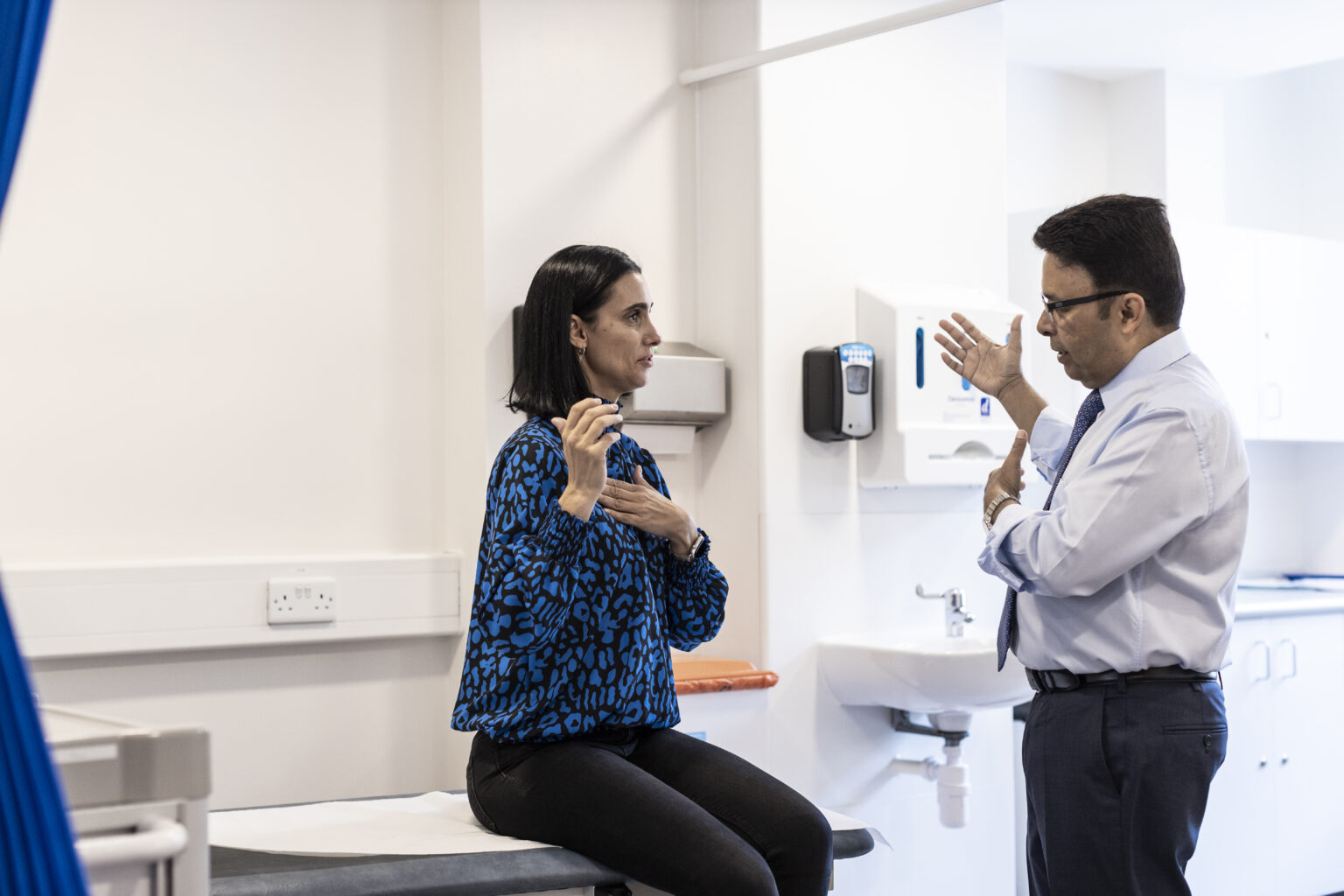Contact number: 020 7806 4060
Everything You Need to Know
Breast augmentation is more than a procedure; it’s a journey towards self-improvement and confidence. It involves choosing between silicone or saline implants, or the option of fat transfer, each tailored to meet individual needs and preferences. This journey is not only about enhancing physical appearance but also about empowering oneself through a meticulously tailored approach that respects one’s bodily proportions and personal aspirations.
The procedure itself is a testament to precision and personalisation, encompassing everything from the initial incision to the careful placement of implants or fat. It’s about achieving a harmony between one’s desires and their natural body contours, offering a bespoke solution that echoes individual stories and aesthetic goals.
Consultants who perform Breast Augmentation Surgery
Before Surgery
Consultation
The first step on your transformative journey is a thorough consultation with our expert plastic surgeons. This conversation is the cornerstone of a personalised treatment plan, ensuring your vision and expectations are fully understood and met with the highest standards of care.
Health Assessment
Prior to your breast augmentation, a comprehensive health assessment will be conducted to ensure your suitability for the procedure. This step is indicative of our commitment to safety and tailored care, ensuring the procedure is optimised for your specific health profile.
Pre-Procedure Instructions
To facilitate a seamless experience and optimal outcomes, we’ll provide you with detailed instructions on how to prepare for your surgery. These guidelines will cover everything from medication adjustments to lifestyle advice, equipping you with the knowledge needed for a smooth procedure and recovery.
During Surgery
Our state-of-the-art surgical facilities are designed to ensure your comfort and safety. The procedure is performed with the utmost care and precision, aimed at achieving the aesthetic goals discussed during your consultation.
Anesthesia
Ensuring your comfort during the procedure, we offer tailored anesthesia options and our team will ensure you are comfortable and pain-free throughout the procedure.
Implant Placement or Fat Transfer
The core of the breast augmentation procedure involves either the strategic placement of implants or the transfer of fat to enhance breast volume. This step is carried out with precision and attention to detail, ensuring results that are both natural and aligned with your aesthetic goals.
Monitoring and Recovery
Immediately following the procedure, you will be taken to our recovery area where our dedicated care team will monitor your initial recovery. You will receive comprehensive post-operative care instructions and support to manage any discomfort.
After Surgery
Our commitment to your care continues well beyond the procedure. The aftercare programme is designed to support your recovery, ensuring a smooth process and achieving the best possible outcomes.
Immediate post-op care involves managing the natural side effects of the procedure, such as swelling, bruising, and discomfort. Our team will provide effective pain management strategies and detailed care instructions to support your healing journey.
Follow-Up Care is crucial for monitoring your recovery and assessing the results of your breast augmentation. These appointments are an opportunity for you to raise any questions or concerns, ensuring your peace of mind throughout the recovery process.
How Much Does Breast Augmentation Surgery Cost?
Guide price from £4,000*
The cost of private breast augmentation surgery is from £4,000* (guide price) at St John & St Elizabeth Hospital.
The price shown is an estimated guide price for related costs associated with your treatment, from admission to discharge. This will vary depending on your surgical needs. This guide price does not include the cost of consultation, diagnostics or the surgeon or anaesthetist free.
Appointment and Treatment Plan
Initial Consultation
Your breast augmentation journey begins with a comprehensive consultation to discuss your goals and assess your suitability for the procedure.
Personalised Treatment Plan
Following your consultation, a tailored treatment plan will be developed to detail the specifics of your procedure, including the choice of implants or fat transfer.
Pre-Op Assessment
A thorough pre-operative assessment will confirm your fitness for surgery, with tests conducted to ensure the highest standards of care and safety.
The Procedure
Performed by our skilled surgical team, your breast augmentation will be conducted with precision, focusing on achieving your desired aesthetic outcomes.
Aftercare and Recovery
Post-procedure, you’ll receive detailed aftercare instructions and follow-up appointments to support your recovery, ensuring a smooth process and the best results.
Top Tips
Recovery is a critical phase where careful adherence to post-operative instructions can significantly influence the outcome. Here are essential tips for a smooth recovery:
It’s imperative to adhere strictly to the aftercare instructions provided by your surgeon.
Give your body the time it needs to heal properly, avoiding any strenuous activities that could impact the results.
A balanced diet and plenty of fluids are crucial for a smooth recovery and overall well-being.

